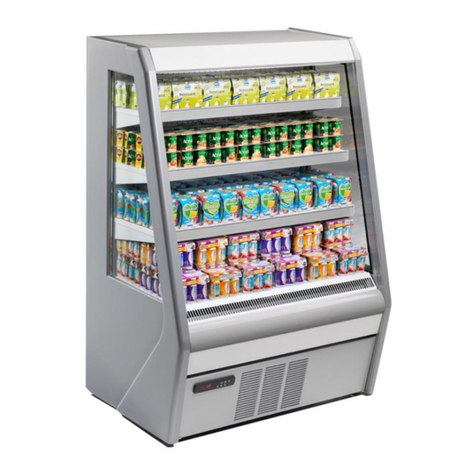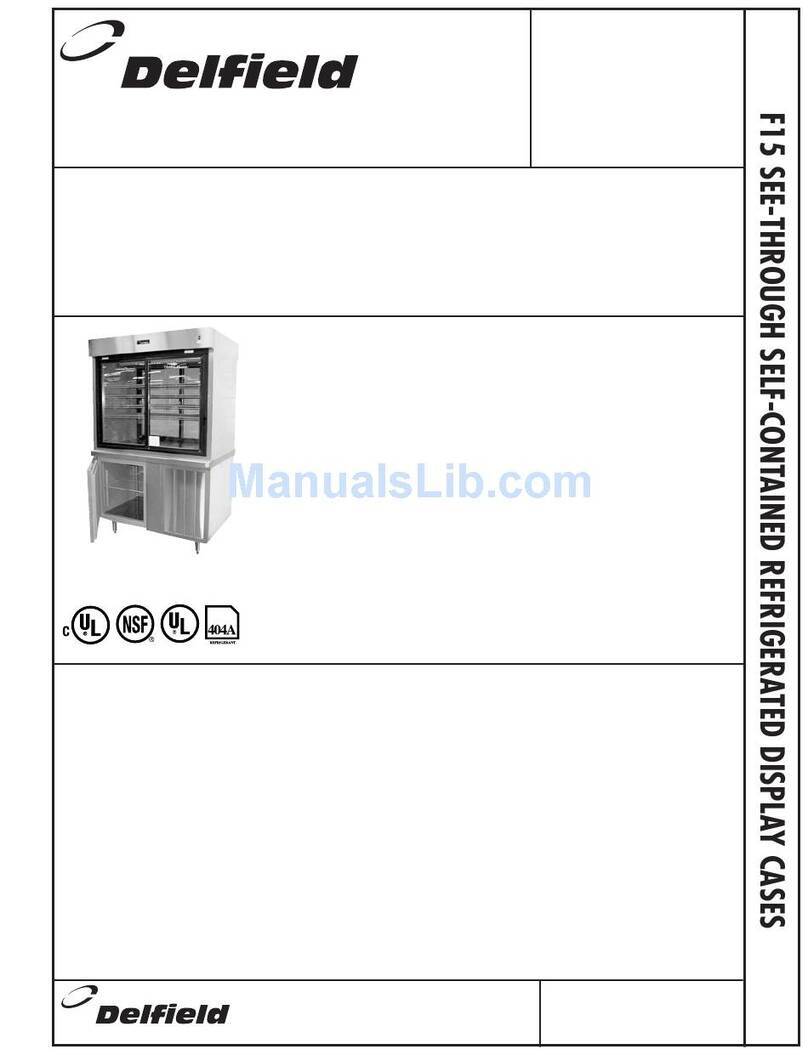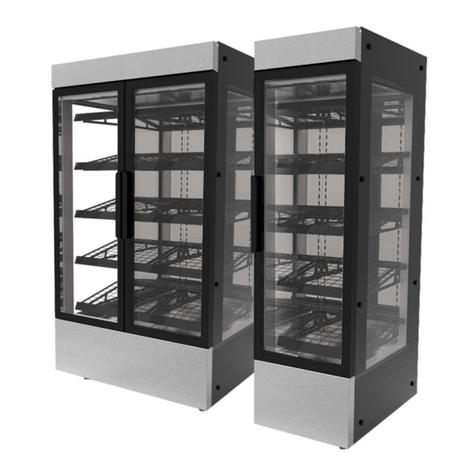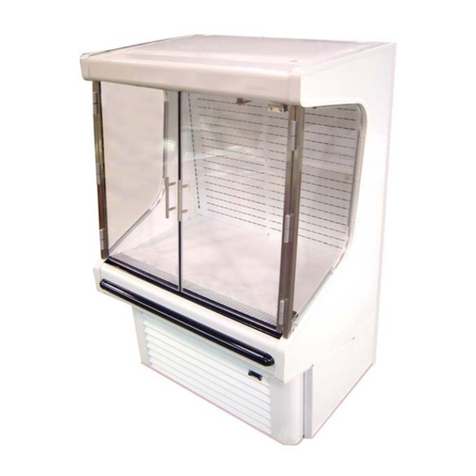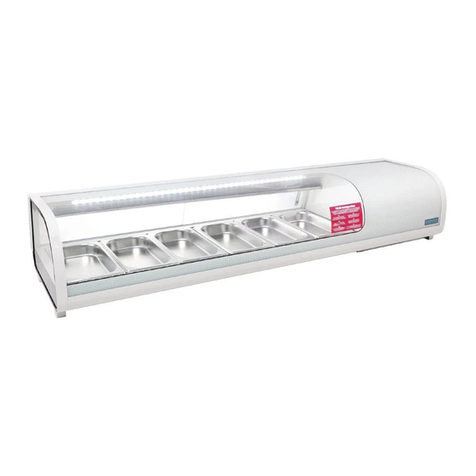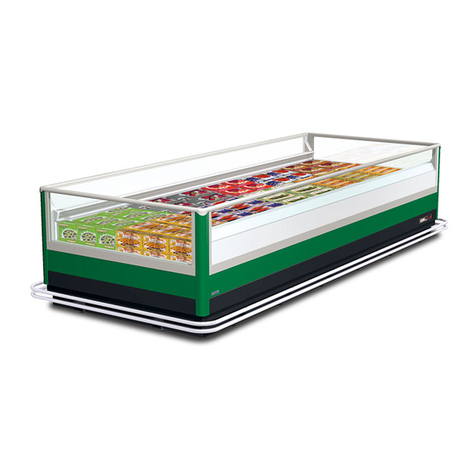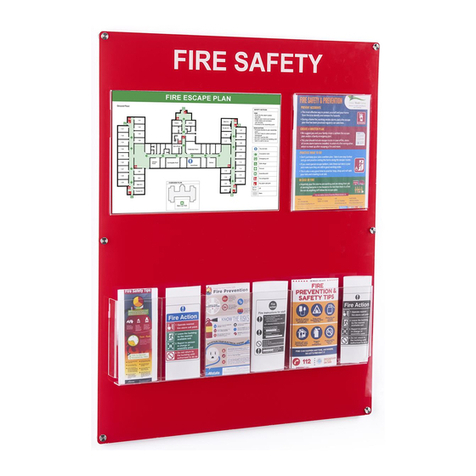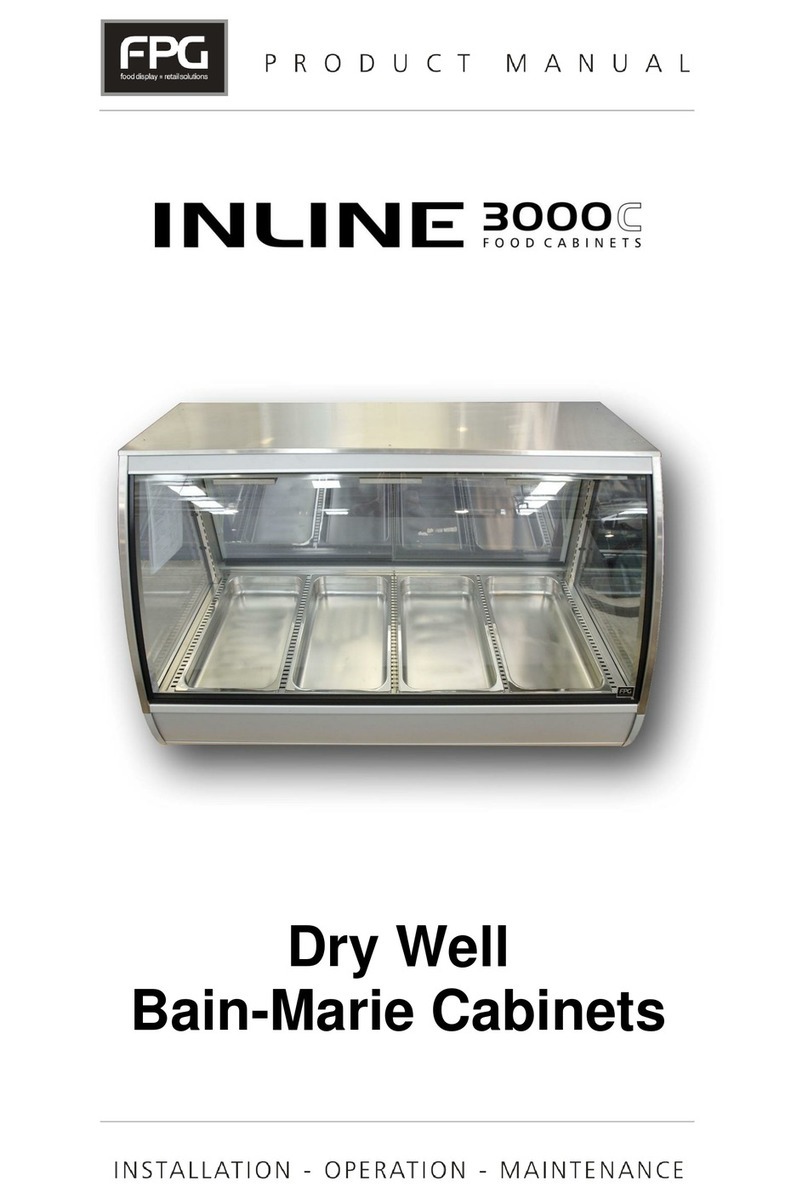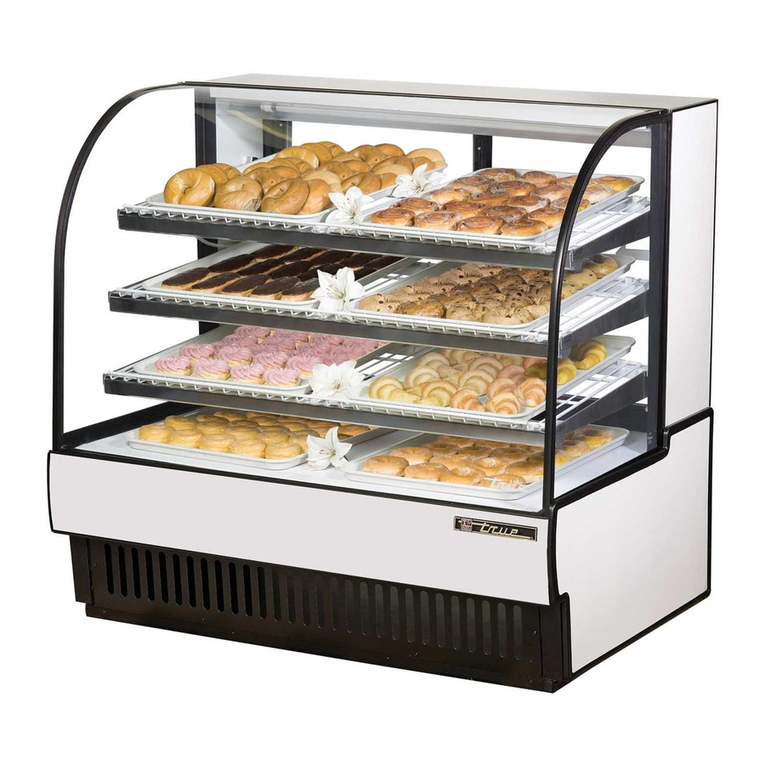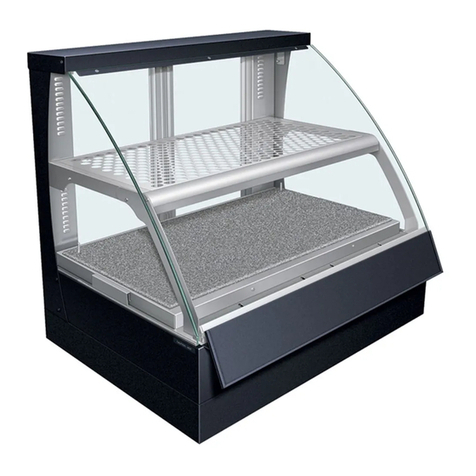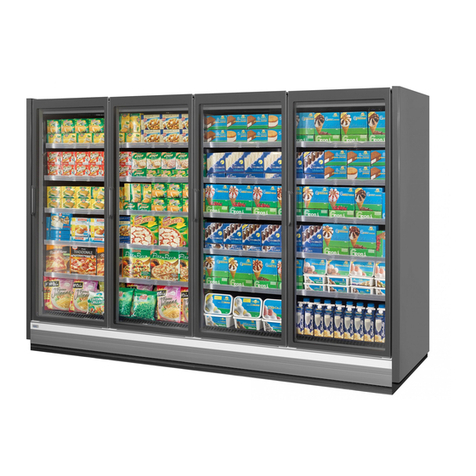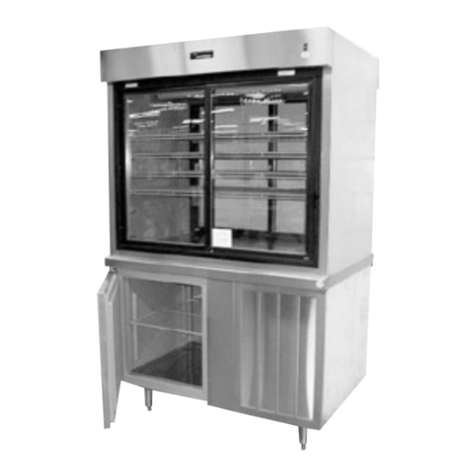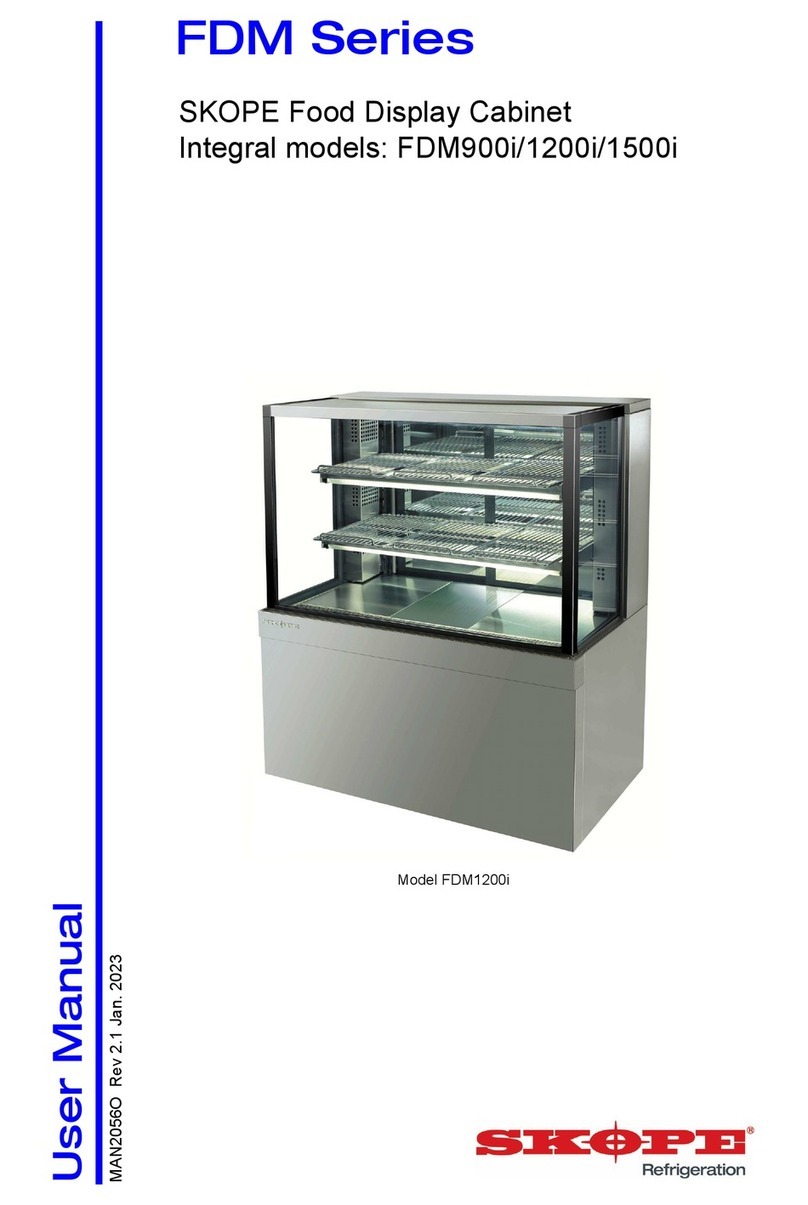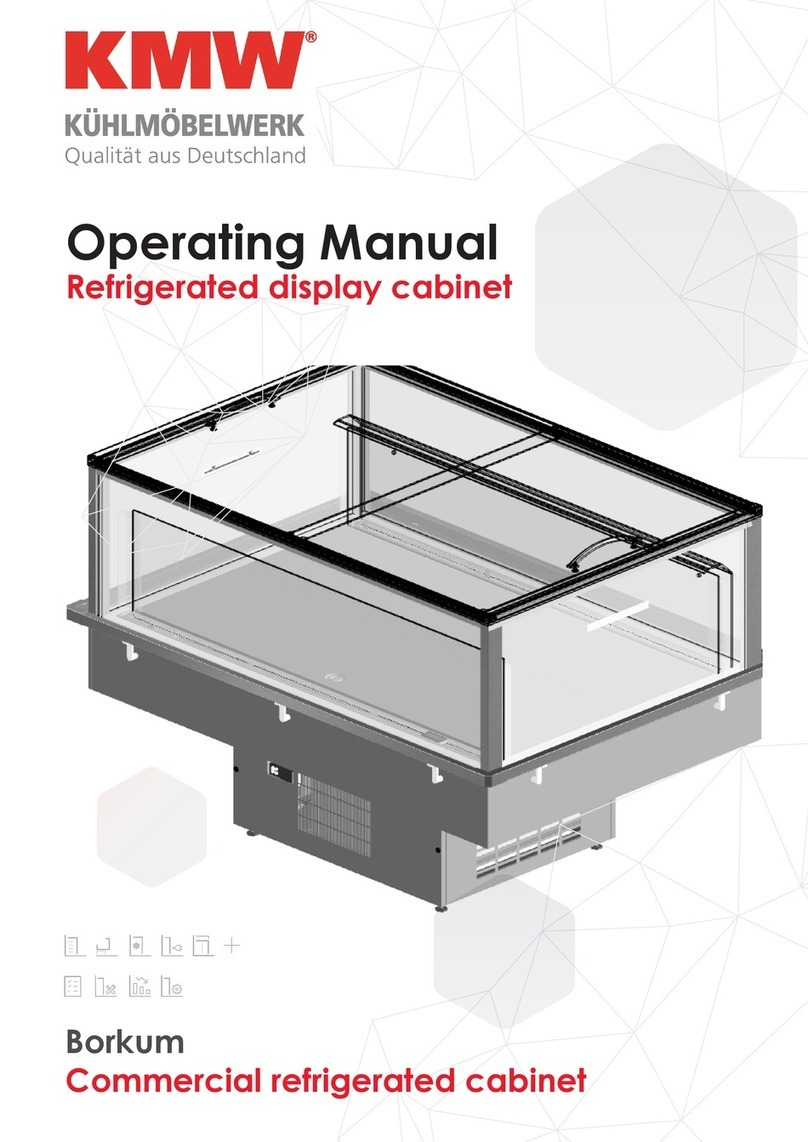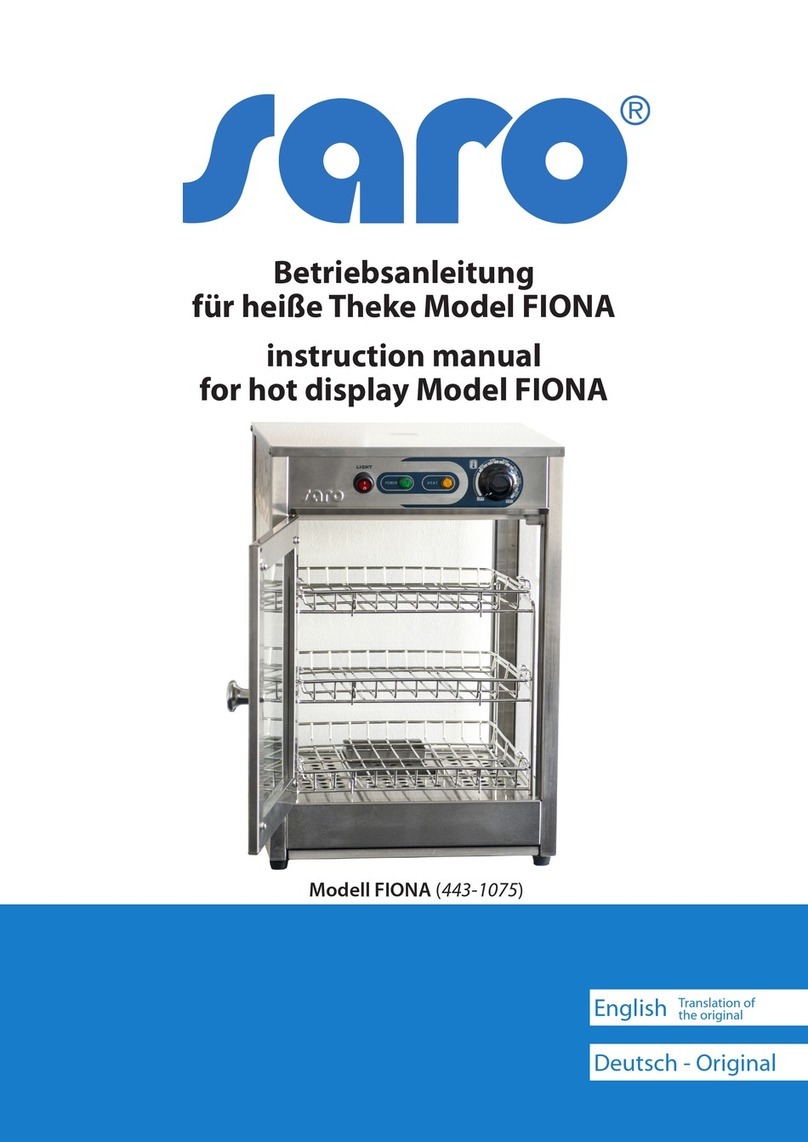
3.3.1 SUPPLIES UPON REQUEST
It is understood that modifications and/or addition of components are subject to manufacturer's approval and must be
made by the manufacturer himself.
3.4 ELECTROMAGNETIC ENVIRONMENT
The refrigerator is designed to operate correctly within an electromagnetic environment of industrial type,
as it falls within the Electromagnetic Emissions & Immunity limits provided for by the Harmonised standards
given below:
EN 50081-2 Electromagnetic compatibility - Generic emission standard - Part 2 -Industrial environment (1993).
EN 50082-2 Electromagnetic compatibility - Generic immunity standard -Part 2 - Industrial environment (1995).
4. S A F E T Y
4.1 GENERAL WARNINGS
The operator must carefully read the information contained in this manual, giving special attention to the
safety precautions listed in this chapter.
The User must also follow the safety guidelines listed hereunder:
Always keep the display case clean and tidy;
Do not remove or modify the label plates affixed by the manufacturer;
Do not remove or ignore safety devices;
Do not touch the apparatus when hands or feet are wet or damp;
Do not touch the apparatus when barefoot;
Do not introduce screw drivers or any other object in between guards or parts in motion;
Do not disconnect the apparatus by pulling the supply cable out from the outlet;
Before performing any cleaning and /or maintenance work, disconnect the apparatus from the power line.
To do this, turn off the master switch and disconnect the plug.
4.2 RECOMMENDED USE
The refrigerated display case is designed and intended for use by Communities, Restaurants, Hotels, etc.
4.3 CONTRAINDICATIONS AND PRECAUTIONS FOR USE
The refrigerated display case must not be used:
for any purpose other than for the purposes specifically indicated under paragraph 4.2.
in explosive or harsh environments or in the presence of high concentration of dust particles or
oily substances suspended in the air;
in potentially fire-hazardous environments;
if exposed to weather elements;
with adaptors, multiple - outlet sockets and/or electric extension cables;
Operators/and or maintenance staff are expressly
forbidden from making any odification or alteration to
the refrigerator due to the safety risks involved. The
manufacturer shall not be held responsible for any
unauthorized modification and consequences arising
therefrom.
